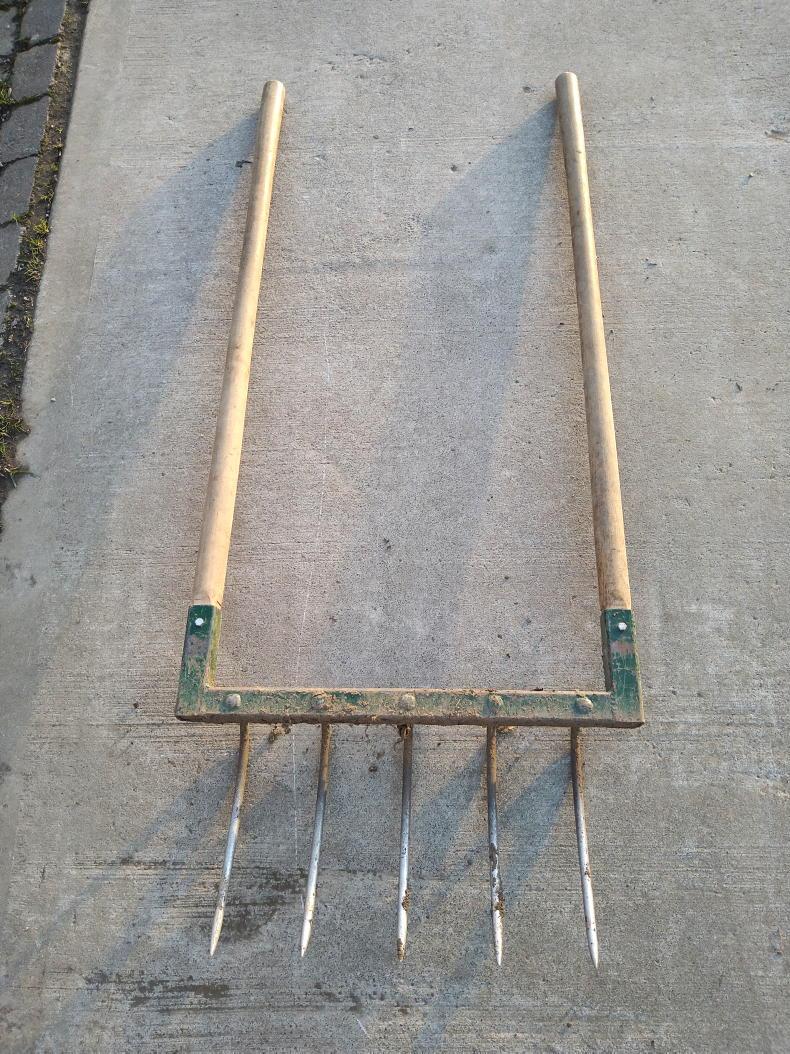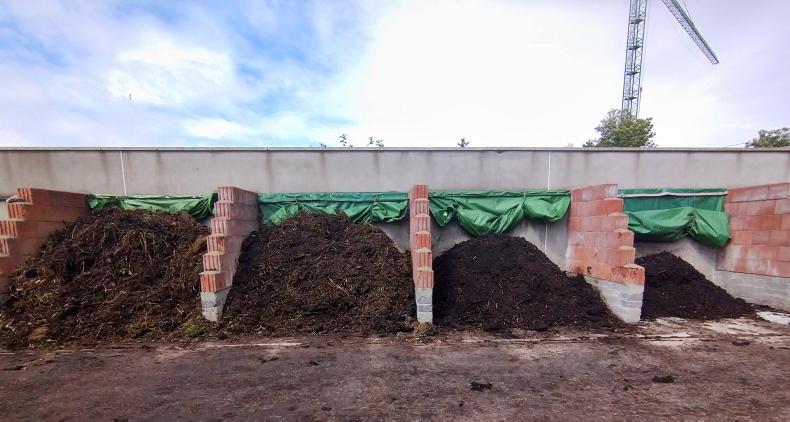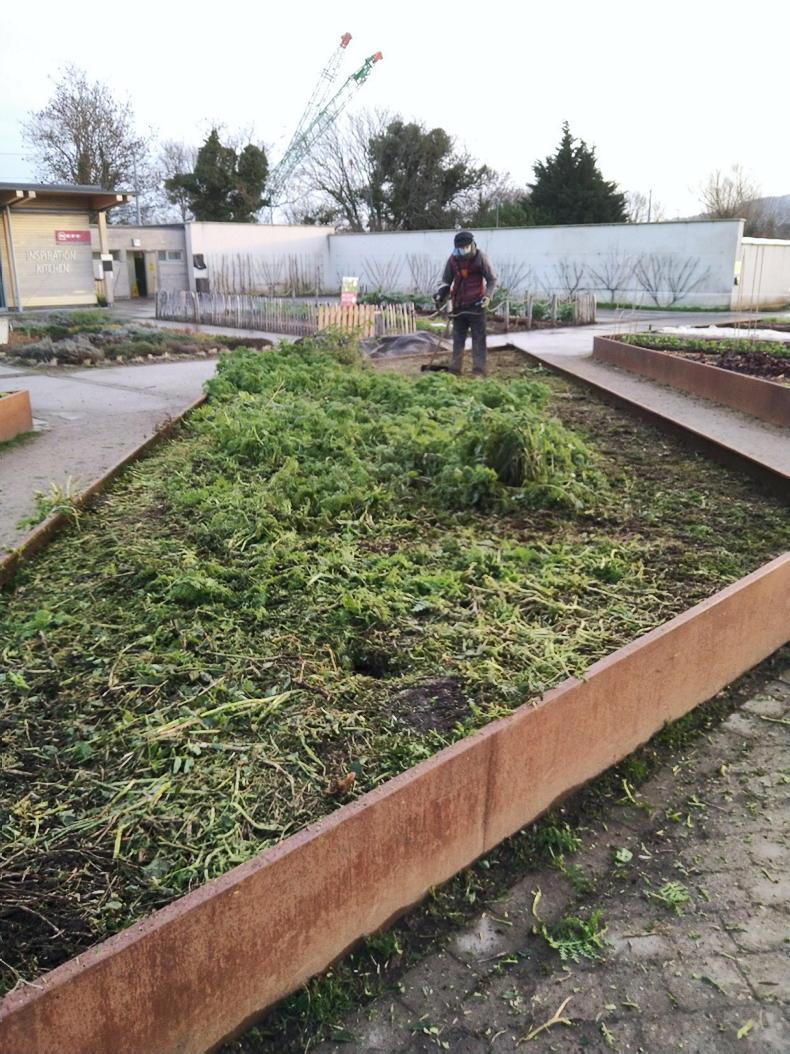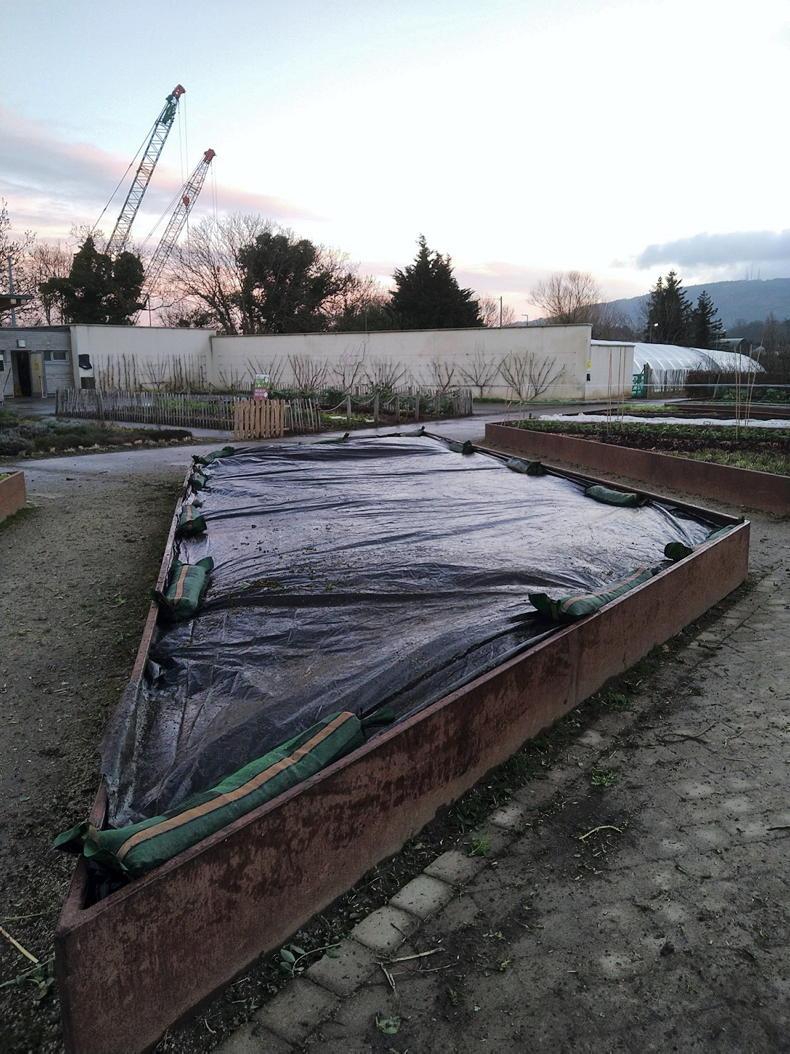Regenerative agriculture is steadily increasing in popularity globally.
It is being heralded by some as a more environmentally and financially sustainable way to farm, with fewer inputs and greater diversity of outputs.
Less is spoken about regenerative organic horticulture, but it too has the potential for positive change. I have been practicing regenerative organic horticulture in the eight acres of gardens that I manage in Airfield Estate in Dundrum.

Regenerative organic horticulture aims to restore natures balance and encourage the naturally occurring biological processes that can enhance the physical and chemical properties of soil.
This area includes three acres of intensive market garden food production supplying a busy on-site cafe and farmer’s market.
But practically speaking what is regenerative organic horticulture? As is the case with regenerative agriculture soil health is at the heart of regenerative organic horticulture. One certifying body has identified six guiding practices to define it. These practices include:
1 Growing organically.
2 Using cover crops.
3 Applying compost.
4 Implementing crop rotation.
5 Intercropping.
6 Low to no tilling.
In truth, the first five of these practices are already key practices used when growing organically.

Colm O'Driscoll has been practicing regenerative organic horticulture in the eight acres of gardens that he manages in Airfield Estate in Dundrum for many years.
However, the sixth practice – low to no tilling – is not necessarily a practice required by standard organic certification. This is the key distinguishing practice that separates organic horticulture from regenerative organic horticulture.
‘No dig’ does not equal ‘no work’
No-dig gardening has steadily increased in popularity, especially amongst market gardeners and home growers. The prospect of abandoning digging is music to the ears of any gardener who suffers from back pain. However, “no-dig” gardening does not equate to “no-work” gardening. For no-dig gardening to be a success, it is not as simple as throwing away your spade.

A broadfork is an essential tool for a no-dig garden.
The motivating factor for the adoption of a no-dig approach to horticulture in Airfield was to improve soil health. Healthy soil will produce a healthy plant, so rather than focusing on feeding the plants we instead turned our attention to nurturing the soils.
Soil is a living ecosystem with more living organisms in 1 tsp of soil than there are people on this planet. The health of the soil is determined by the relationship between the physical, chemical, and biological properties which enable this ecosystem to function. Historically as gardeners, we have often focused on manipulating the physical and chemical properties of soil. We have tilled soils to improve soil structure, and we have applied chemical fertilisers to improve fertility. There has been a tendency to neglect the biological processes present in soils. Often the acts of tilling and applying chemicals to the soil serve only to interrupt the biological processes, harming soil life.
The natural process
One naturally occurring process that is directly impacted by the application of chemical fertilisers and tilling is the relationship between soil microbes and plant roots.
Plant roots naturally excrete exudates on which soil microbes feed. In return, the soil microbes supply the plants with essential nutrients enabling healthy plant growth.
When we as growers introduce artificial fertilisers into soil, we disrupt this symbiotic relationship. Plants stop producing exudates and instead absorb the artificial nutrients that are present.

Establishing your own supply of garden compost can greatly increase the feasibility of no-dig gardening.
This in turn, renders the plant reliant on the future application of fertilisers to grow. Plants become reliant on our interventions and ironically, we create more work for ourselves.
Regenerative organic horticulture aims to restore nature’s balance and encourage the naturally occurring biological processes that can enhance the physical and chemical properties of soil. Biomimicry is the act of taking inspiration from nature and adapting this to manmade systems. No-dig gardening draws inspiration from native deciduous woodland where we usually find the healthiest naturally occurring soils. Here the undisturbed soils support a great diversity of plant types with a mix of trees, shrubs, herbaceous plants, and annuals all combining and thriving in a healthy ecosystem. No-dig gardening aims to emulate the healthy soil we find in nature by imitating natural processes that can be adopted into our gardening systems.
The first and most obvious inspiration is the elimination of tilling, this is one process we know does not happen in nature. Soil is naturally divided into distinguishable layers forming separate soil horizons. By eliminating tilling, we maintain these soil layers and allow soil life to carry on undisturbed. It also means that dormant weed seeds that are present in the topsoil are not brought to the surface which can help reduce weed pressure in no-dig gardening.
Cover cropping
The second inspiration is that healthy soils are never bare and always covered by plants or decomposing organic matter. The key takeaway here is that we should never leave our soils bare. Traditionally bare soils most commonly occur in the garden during the winter months when the potential for damage from severe weather is most likely to occur. Leaching of soil nutrients and water run off increases when soils are left bare. To combat this, we aim to, where possible, have a living plant growing in the soil. During winter months we grow green manure cover crops.

We should never leave our soils bare as healthy soils are always covered by plants or decomposing organic matter.
Cover crops help retain nutrients and improve soil structure while reducing the amount of water lost as runoff. When selecting cover crops it is key to draw influence once again from a healthy woodland environment and select a diverse mix of plant types in the cover crops. A mixed species cover crop should include up to eight different plant groups all with different growth habits and rooting depths.
Tap-rooted plants such as alfalfa can be used to help naturally alleviate compaction and draw up nutrients from deeper soil layers. Transitioning from a cover crop into a vegetable crop can be tricky in a no-dig system. Black plastic tarps can be used to terminate the cover crop and help prepare the ground for sowing. Tarps must be applied in late winter to ensure the crop beneath is completely irradicated in time for the next vegetable crop.
Establishing green manure cover crops may not always be feasible and in such cases, we draw influence from deciduous trees that carpet the woodland floor with their leaves over the winter months. The gardening equivalent is using compost to cover and protect the bare soil. Green waste compost is ideal for this purpose. It can be expensive to buy so establishing your own supply of garden compost can greatly increase the feasibility of no-dig gardening. The compost layer will not only protect the soil from the elements, but it is high in organic matter which will help feed soil life. It also helps prevent weed growth and will improve the water holding capacity of soil making soil more resilient to drought.

Black plastic tarps can be used to terminate the cover crop and help prepare the ground for sowing.
A fourth inspiration is the imitation of the role carried out by deep rooting plants to help alleviate compaction. The broadfork is an essential tool for anyone hoping to practice no-dig gardening. This oversized fork is used to penetrate deep into the soil alleviating compaction without inverting or mixing the soil layers.
However, not all of nature’s processes translate directly to a garden setting. Occasionally there may be just cause to carry out some shallow tilling. If you are growing on a larger scale shallow tilling of the cover crop may be justified for preparing the ground prior to planting. Similarly cultivating direct sown crops such as carrots/parsnips in a no-dig system can be tricky and often a shallow till to prepare the seed bed can be required. Whatever your approach to managing soil health in your garden this season a lot can be learnt by observing nature and working with it to improve your soil health.
Read more
Groundcare: growing a small herb garden at home
Groundcare: garden upcycling 101
Regenerative agriculture is steadily increasing in popularity globally.
It is being heralded by some as a more environmentally and financially sustainable way to farm, with fewer inputs and greater diversity of outputs.
Less is spoken about regenerative organic horticulture, but it too has the potential for positive change. I have been practicing regenerative organic horticulture in the eight acres of gardens that I manage in Airfield Estate in Dundrum.

Regenerative organic horticulture aims to restore natures balance and encourage the naturally occurring biological processes that can enhance the physical and chemical properties of soil.
This area includes three acres of intensive market garden food production supplying a busy on-site cafe and farmer’s market.
But practically speaking what is regenerative organic horticulture? As is the case with regenerative agriculture soil health is at the heart of regenerative organic horticulture. One certifying body has identified six guiding practices to define it. These practices include:
1 Growing organically.
2 Using cover crops.
3 Applying compost.
4 Implementing crop rotation.
5 Intercropping.
6 Low to no tilling.
In truth, the first five of these practices are already key practices used when growing organically.

Colm O'Driscoll has been practicing regenerative organic horticulture in the eight acres of gardens that he manages in Airfield Estate in Dundrum for many years.
However, the sixth practice – low to no tilling – is not necessarily a practice required by standard organic certification. This is the key distinguishing practice that separates organic horticulture from regenerative organic horticulture.
‘No dig’ does not equal ‘no work’
No-dig gardening has steadily increased in popularity, especially amongst market gardeners and home growers. The prospect of abandoning digging is music to the ears of any gardener who suffers from back pain. However, “no-dig” gardening does not equate to “no-work” gardening. For no-dig gardening to be a success, it is not as simple as throwing away your spade.

A broadfork is an essential tool for a no-dig garden.
The motivating factor for the adoption of a no-dig approach to horticulture in Airfield was to improve soil health. Healthy soil will produce a healthy plant, so rather than focusing on feeding the plants we instead turned our attention to nurturing the soils.
Soil is a living ecosystem with more living organisms in 1 tsp of soil than there are people on this planet. The health of the soil is determined by the relationship between the physical, chemical, and biological properties which enable this ecosystem to function. Historically as gardeners, we have often focused on manipulating the physical and chemical properties of soil. We have tilled soils to improve soil structure, and we have applied chemical fertilisers to improve fertility. There has been a tendency to neglect the biological processes present in soils. Often the acts of tilling and applying chemicals to the soil serve only to interrupt the biological processes, harming soil life.
The natural process
One naturally occurring process that is directly impacted by the application of chemical fertilisers and tilling is the relationship between soil microbes and plant roots.
Plant roots naturally excrete exudates on which soil microbes feed. In return, the soil microbes supply the plants with essential nutrients enabling healthy plant growth.
When we as growers introduce artificial fertilisers into soil, we disrupt this symbiotic relationship. Plants stop producing exudates and instead absorb the artificial nutrients that are present.

Establishing your own supply of garden compost can greatly increase the feasibility of no-dig gardening.
This in turn, renders the plant reliant on the future application of fertilisers to grow. Plants become reliant on our interventions and ironically, we create more work for ourselves.
Regenerative organic horticulture aims to restore nature’s balance and encourage the naturally occurring biological processes that can enhance the physical and chemical properties of soil. Biomimicry is the act of taking inspiration from nature and adapting this to manmade systems. No-dig gardening draws inspiration from native deciduous woodland where we usually find the healthiest naturally occurring soils. Here the undisturbed soils support a great diversity of plant types with a mix of trees, shrubs, herbaceous plants, and annuals all combining and thriving in a healthy ecosystem. No-dig gardening aims to emulate the healthy soil we find in nature by imitating natural processes that can be adopted into our gardening systems.
The first and most obvious inspiration is the elimination of tilling, this is one process we know does not happen in nature. Soil is naturally divided into distinguishable layers forming separate soil horizons. By eliminating tilling, we maintain these soil layers and allow soil life to carry on undisturbed. It also means that dormant weed seeds that are present in the topsoil are not brought to the surface which can help reduce weed pressure in no-dig gardening.
Cover cropping
The second inspiration is that healthy soils are never bare and always covered by plants or decomposing organic matter. The key takeaway here is that we should never leave our soils bare. Traditionally bare soils most commonly occur in the garden during the winter months when the potential for damage from severe weather is most likely to occur. Leaching of soil nutrients and water run off increases when soils are left bare. To combat this, we aim to, where possible, have a living plant growing in the soil. During winter months we grow green manure cover crops.

We should never leave our soils bare as healthy soils are always covered by plants or decomposing organic matter.
Cover crops help retain nutrients and improve soil structure while reducing the amount of water lost as runoff. When selecting cover crops it is key to draw influence once again from a healthy woodland environment and select a diverse mix of plant types in the cover crops. A mixed species cover crop should include up to eight different plant groups all with different growth habits and rooting depths.
Tap-rooted plants such as alfalfa can be used to help naturally alleviate compaction and draw up nutrients from deeper soil layers. Transitioning from a cover crop into a vegetable crop can be tricky in a no-dig system. Black plastic tarps can be used to terminate the cover crop and help prepare the ground for sowing. Tarps must be applied in late winter to ensure the crop beneath is completely irradicated in time for the next vegetable crop.
Establishing green manure cover crops may not always be feasible and in such cases, we draw influence from deciduous trees that carpet the woodland floor with their leaves over the winter months. The gardening equivalent is using compost to cover and protect the bare soil. Green waste compost is ideal for this purpose. It can be expensive to buy so establishing your own supply of garden compost can greatly increase the feasibility of no-dig gardening. The compost layer will not only protect the soil from the elements, but it is high in organic matter which will help feed soil life. It also helps prevent weed growth and will improve the water holding capacity of soil making soil more resilient to drought.

Black plastic tarps can be used to terminate the cover crop and help prepare the ground for sowing.
A fourth inspiration is the imitation of the role carried out by deep rooting plants to help alleviate compaction. The broadfork is an essential tool for anyone hoping to practice no-dig gardening. This oversized fork is used to penetrate deep into the soil alleviating compaction without inverting or mixing the soil layers.
However, not all of nature’s processes translate directly to a garden setting. Occasionally there may be just cause to carry out some shallow tilling. If you are growing on a larger scale shallow tilling of the cover crop may be justified for preparing the ground prior to planting. Similarly cultivating direct sown crops such as carrots/parsnips in a no-dig system can be tricky and often a shallow till to prepare the seed bed can be required. Whatever your approach to managing soil health in your garden this season a lot can be learnt by observing nature and working with it to improve your soil health.
Read more
Groundcare: growing a small herb garden at home
Groundcare: garden upcycling 101












 This is a subscriber-only article
This is a subscriber-only article










SHARING OPTIONS: